Sometimes an automaker wants to, or is required to, offer multiple fuel tank sizes, and because blow-moulding a different-size fuel tank is prohibitively expensive, carmakers tend to employ rather ridiculous methods to achieve their goal. Among my favorite example is the Jeep Wrangler YJ’s “rubber hose” trick, which allows owners to increase their fuel tank size by 5 gallons for free by simply cutting a hose. Allow me to explain.
Before I jump into the Jeep YJ’s crazy fuel tank limitation strategy, I’ll first talk about another, more modern vehicle that changes its fuel tank “size” via a ridiculous method: The BMW i3.
As you know, I adore my 2021 BMW i3S Giga World in Galvanic Gold just like I adored the 2014 model that I owned before. But to get the most out of the latter, I had to actually go in and “code” the car to increase its gas tank size. Yes, you read that right — I could digitally change the size of the car’s fuel tank.
Changing The Gas Tank Size Using A Cell Phone
Here’s a look at the section of “Bimmercode,” via YouTuber SimpleCarGuy, that allows you to, via your cell phone connected to a bluetooth OBDII dongle, “increase electronically limited fuel capacity”:
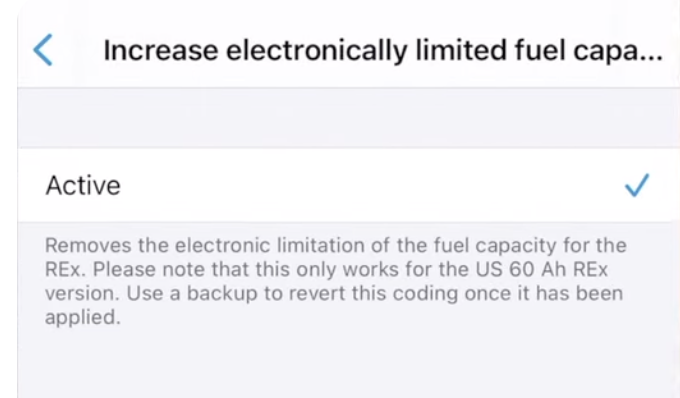
The BMW i3’s fuel tank has a capacity of 2.4 gallons, but for U.S.-sold 2014 to 2016 BMW i3 REXs, which have an EPA-estimated EV range of only 72 miles, the gas tank had to be limited to just 1.9 liters in order to qualify as a “BEVx” in the eyes of California. The Truth About Cars breaks it down, writing:
Rather than an actual percentage of cars sold, CARB created a credit system where an alphabet soup of classifications (PZEV, AT-PZEV, TZEV, etc) get partial credits and true ZEVs can get multiple credits. Into this complicated world came the unicorn that is the BEVx. Despite having a gasoline burning engine, BEVxs get the same credits as a vehicle with the same range and no dinosaur-burner. The distinction is important and critical. If the BEVx requirements are met, the i3 gets the same 2.5 credits as the i3 EV, if not it would get a fractional credit just like a regular Prius. The requirements are: the fossil fuel range must be less or equal to the EV range…the battery must deplete to a low level before the generator kicks in and may not be charged above that level. In addition the fossil fuel generator or APU must meet CA’s SULEV emissions standards and have a long battery warranty.
So, with the gasoline range extender helping the car get about 35 MPG, at 2.4 gallons, the little 647cc scooter motor would be able to propel the car 84 miles — a dozen miles over the 72 mile EV range. To solve this, BMW simply prevented the user from accessing all 2.4 gallons. It’s not 100% clear how BMW accomplishes this, but I assume the car shuts the fuel pump off after a certain volume has flowed out of the tank and into the engine.
In just a few minutes, a BMW i3 owner can not only increase their tank size by half a gallon (and thus increase their driving range by about 18 miles), but they can also code out the other BEVx requirement via something called “Hold State Of Charge,” which lets the engine cut on at 75% battery capacity (versus the ~6.5% required by California), thus avoiding the battery dropping close to 0% state-of-charge when climbing hills and possibly having to slow the car down.
This is a quick way to get more fuel tank capacity, and while the Jeep Wrangler YJ mod takes more time since it’s a mechanical fix versus a digital one, the results are much more dramatic than the BMW i3’s extra half a gallon.
Cutting A Small Rubber Tube Gets You An Extra 5 Gallons

This is something I came across while trying to fix a gas smell from my YJ, though one of you dear commenters recently brought it up, inspiring me to write this.
If you look at the Jeep YJ from the rear, you can see, hanging down below, a skid plate protecting its fuel tank:
[rear]
At 20 gallons, that’s a huge tank; several modern mid-size trucks have smaller ones. But on certain Jeep YJs — mostly four-cylinder ones — the tank is actually specified as only a 15-gallon unit. That’s because Jeep “artificially” reduced its capacity, but unlike BMW who used a computer to do so, Jeep just employed the use of a rubber tube.
YouTuber JeepSolid shows the pressed-in tube in his video; the screenshot below shows that tube on the right:

As JeepSolid shows, to increase the fuel capacity, you simply yank the tube out with some vice grips and cut it down from about 10 inches to 2.75 inches or so:
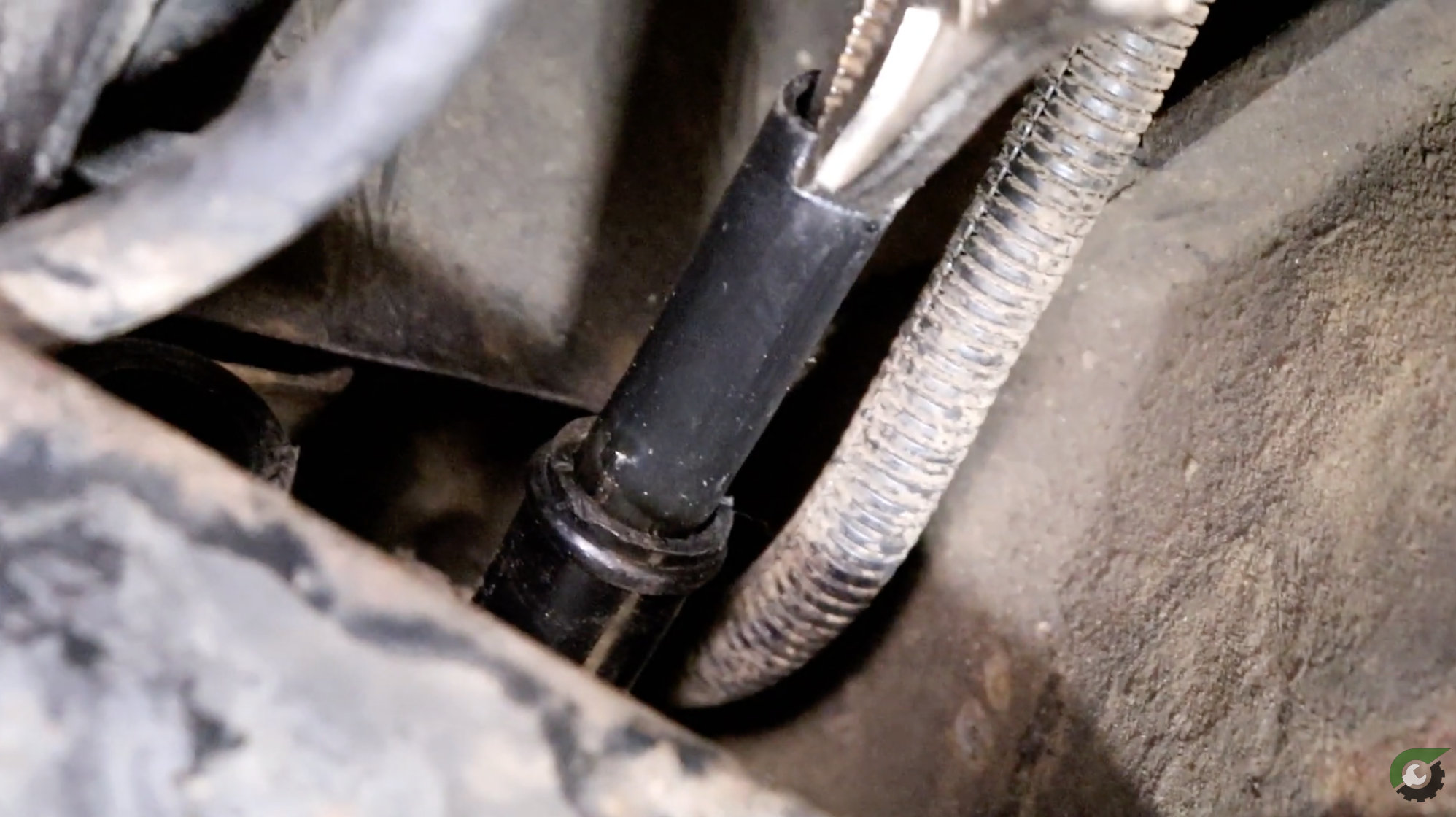
Another YouTuber, Plane Simple, just removed the tube entirely and it seems to work fine (some warn that it could lead to some over-filling/splashing). He illustrates just how far the 15-gallon tank’s vent tube reaches down into the tank:
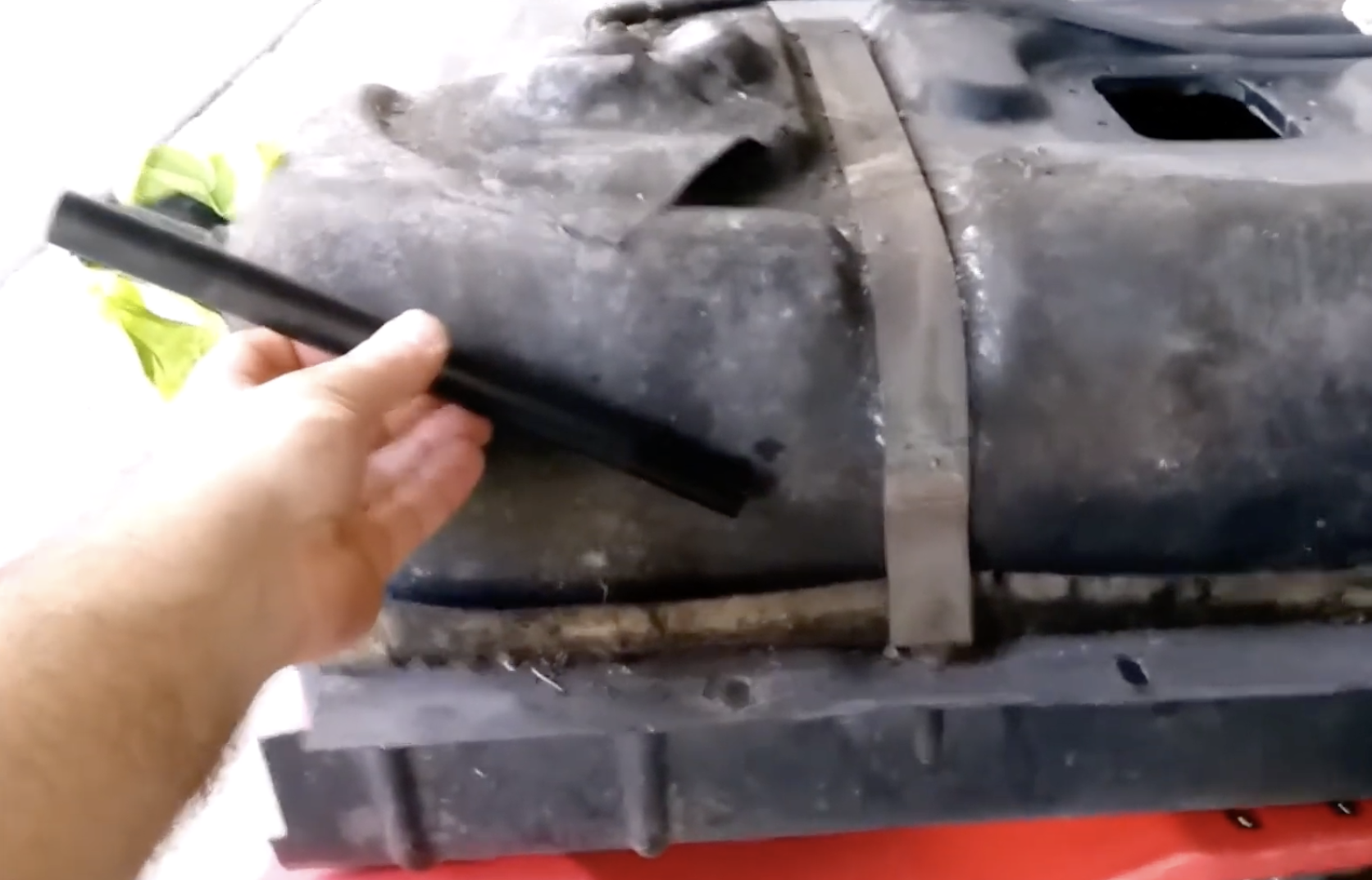
As JeepSolid points out, the longer vent tube restricts fuel flow because once the liquid gasoline covers the bottom of the tube, all gases must escape the tank through the filler neck, triggering the gasoline nozzle at the gas station to shut off flow:
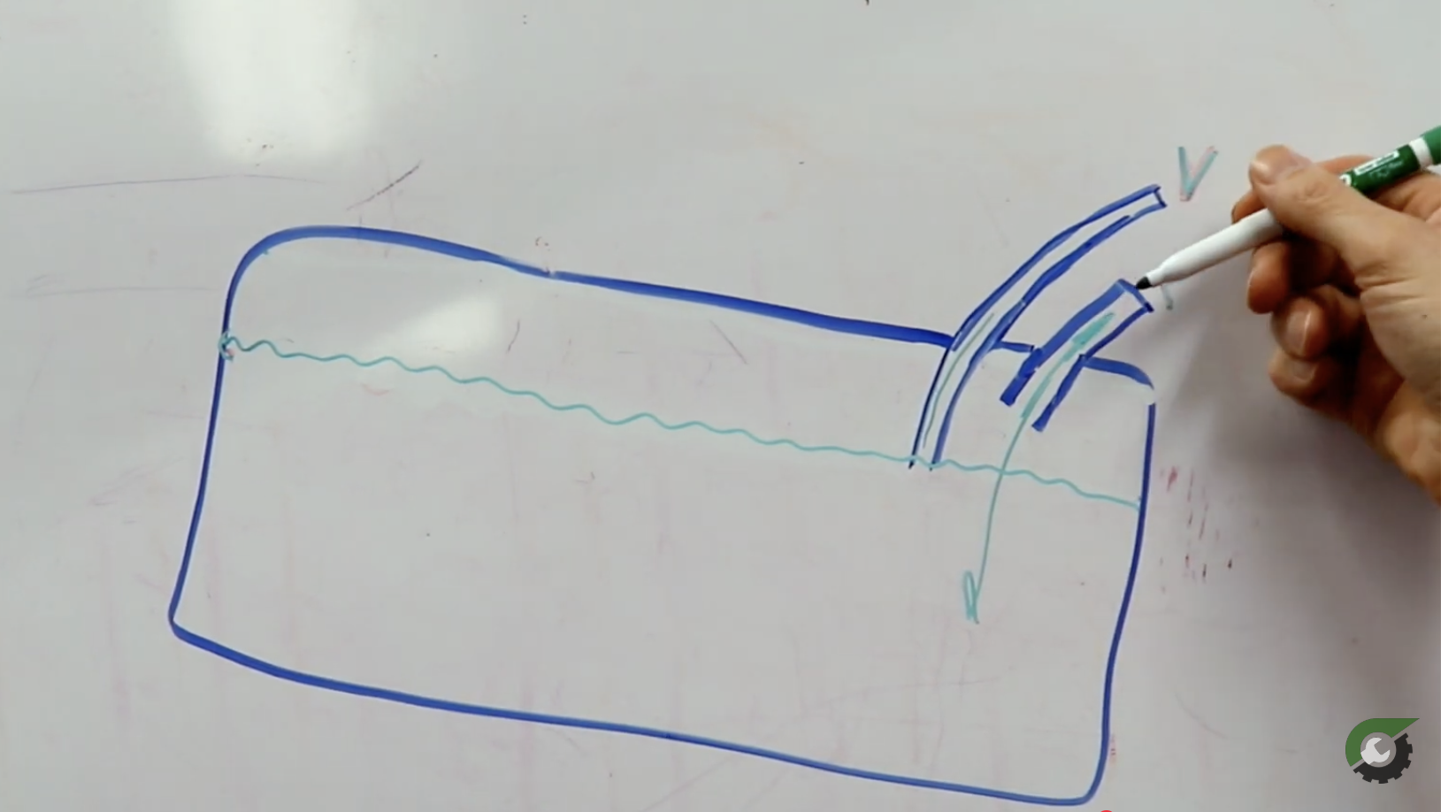
Shortening or removing the vent tube means liquid gasoline must reach way up into or near the filler neck before the gases shuts off the nozzle.
The downsides to this free mod are few. Obviously, the fuel gauge will read “F” for a very, very long time, since even 15 gallons is considered a full tank to that sending unit. But otherwise, it’s a truly free improvement.
You do have to wonder why Jeep did this in the first place, and while I initially thought the reason was to force shoppers to pay extra for a “big capacity” tank, I’m finding some admittedly less-than-primary sources that say otherwise. Here’s what T-Rex Auto Parts says:
Why did Jeep put a restrictor pipe in the 1991-1995 Wrangler YJ gas tank?
Answer: From what we have been told, Jeep needed to meet Federal Café Standards on fuel mileage per gallon within their lineup, so by reducing this tank by 5 gallons (approx. 40 lbs) they were able to increase the MPG on this vehicle and be within the Federal guidelines.
So they did it to save weight? I don’t buy that. Not only does 5 gallons weigh about 31 pounds (not 40 pounds), I’m fairly sure the EPA’s FTP-75 drive cycle specifies that vehicles are to have their tanks filled at 40%. So that means a 15 gallon tank would have 6 gallons in it and a 20 gallon tank would have 8 gallons in it; that’s a delta of only two gallons — or about 12-ish pounds.

No, I think the reality is that the YJ offered the “extra capacity” fuel tank as an option on the Wrangler, Wrangler Base, and Wrangler Islander, while the Sahara and Renegade came with the big tank as standard. My intuition tells me that Google AI is full of it, and the real reason has pretty much nothing to do with the EPA, and everything to do with maximizing profit.
Regardless, it’s a fascinating and incredibly primitive solution.
Top Image: Jeep

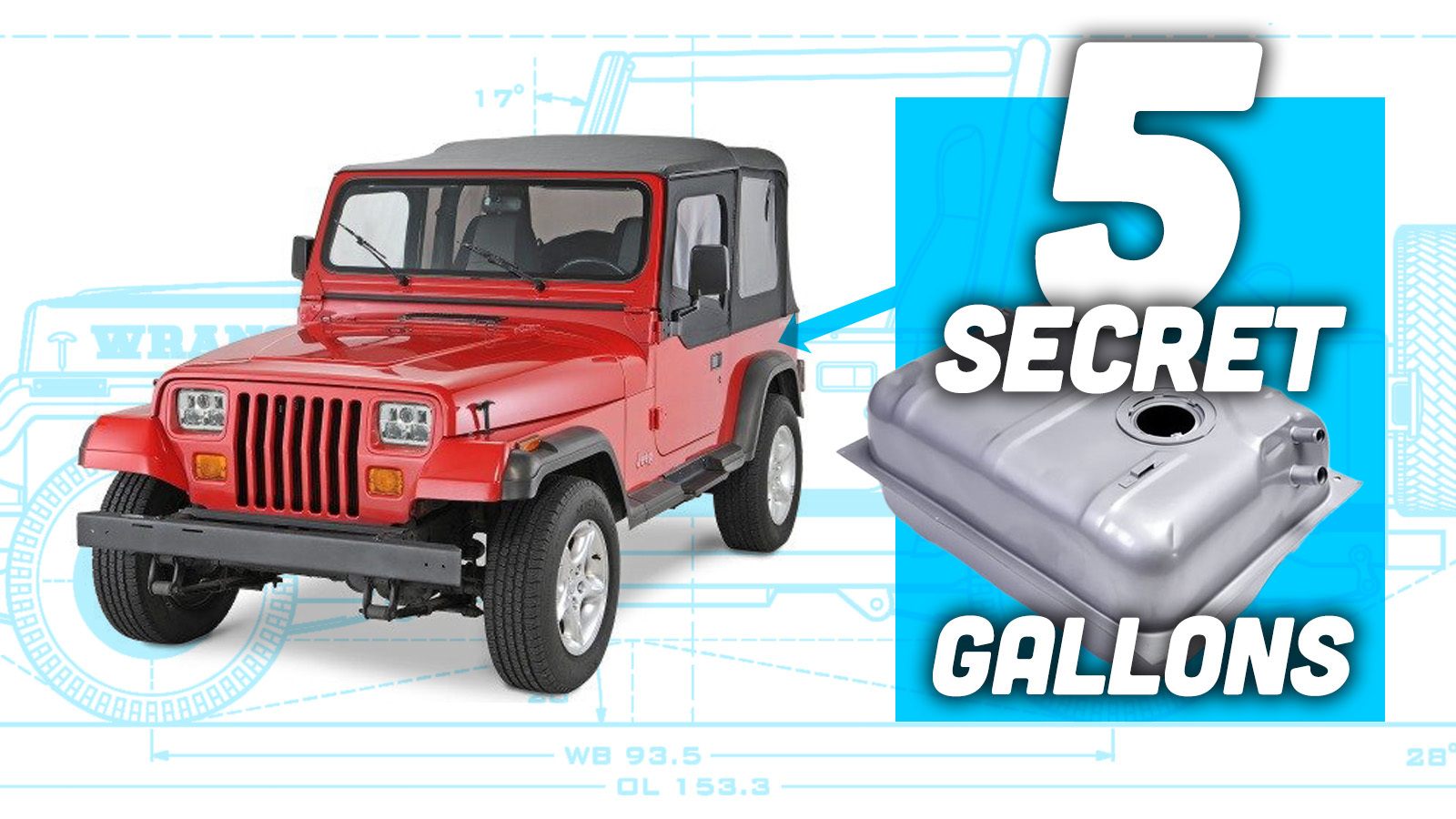






“Regardless, it’s a fascinating and incredibly primitive solution.” I halfway agree with you. It’s fascinating and incredibly shameful.
That could almost be one of Jason’s Phoning It In articles.
“To solve this, BMW simply prevented the user from accessing all 2.4 gallons. It’s not 100% clear how BMW accomplishes this, but I assume the car shuts the fuel pump off after a certain volume has flowed out of the tank and into the engine.”
I would bet that BMW doesn’t shut off the fuel.
My bet is that the fuel gauges and “low fuel” warnings are set to read as empty while you still have .4 gallons in the tank.
Why do I believe this to be true?
Because while my CLK350 has a 16.4 gallon fuel tank – when I have run the tank down so that all the readouts scream at me the car is in immediate danger of running completely dry – when I finally refill, I’ve never put more than 15.5 gallons into the car.
So what you’re doing to reprogram the BMW to access more fuel is merely changing the point when the car decides to inform you it’s running dry.
Despite this article being about the YJ, my takeaway is that Cali’s rules kneecapped the i3 from being a nearly perfect EREV.
While rules and regs are important, this is a prime example of legislation getting in it’s own way.
Weight classes for EPA fuel economy are ‘binned’ in increments of 250 lb (4000, 4250, 4500, etc) or 500 lb when 5000 lb or higher. So if a vehicle’s weight is, say, 30 lb into the 4750 lb bin (ie 4530 lb), if they can cut 31 lb then they’re in the 4500 lb bin. Then your testing roadloads are calculated at 4500 lb. A full ‘tank’ of fuel is included in calculation of curb weight. So if you’re desperate for fuel economy at the last minute and can’t redesign a unique tank for this configuration, I guess I could see this happening. Related, though the EPA recommends a 40% full tank, the roadloads that are fed into the dyno are still the ‘bin’ masses I mentioned above.
Not strictly related, but it made me think of my mom’s 2013 Acura TSX which has the same gas tank (a robust 18.5 gallons) in both I4 and V6 variants.
She has the 2.4L I4 and it easily gets ~550 miles of highway range on a single tank which is nuts for a non-hybrid sedan of that era. It’s lowkey a great road trip car.
Loved my 2009 TSX I4.
A large computer company I worked for many years ago ran out of the smaller hard drives offered on our laptops. The solution? Reformat the larger (optional) hard drives to match the capacity of the small hard drive and ship ‘em. Problem solved. I think it took about 15 minutes for somebody out there to figure it out and spread the word that re-formatting your brand-new drive could increase capacity by 25%!
The other way around, MicroShaft charged an EXORBITANT amount of money for a 120GB HDD for the Xbox360.
However, someone figured out that you could flash a Western Digital BEVS series drive to “think” it was an OE xbox 120GB.
So I grabbed a 160GB out of my stack of nerdery, and converted a “base” 20GB drive to a 120GB. I was MORE than willing to give up 40GB of space to save myself $200. I still have that xbox and the drive still works.
Oh god. I had a 4 cylinder YJ many years ago. While I do miss the vehicle as a whole (totally rusty crusty, but fun to drive and a total beater, so I just did whatever I wanted to it and didn’t have to care), I really hated that ’15’ gallon tank. With that and the terrible highway fuel mileage, I could go father between fuel stops on my Goldwing than the YJ! A buddy and I drove it from south eastern Indiana to Red River gorge, and found ourselves regularly stopping about every 150 miles.
Gaslighting!
I suspect whoever wrote that bit assumed that petrol weighed the same as water (possibly because they’re both low-viscosity fluids).
Excellent David! Maybe there are more free hacks out there to find. “Use shorter spark plugs to make room for more gas! Gain 20 hp!!!”
Why couldn’t BMW just use the rubber hose trick? It’s a Jeep thing. They didn’t understand 😛